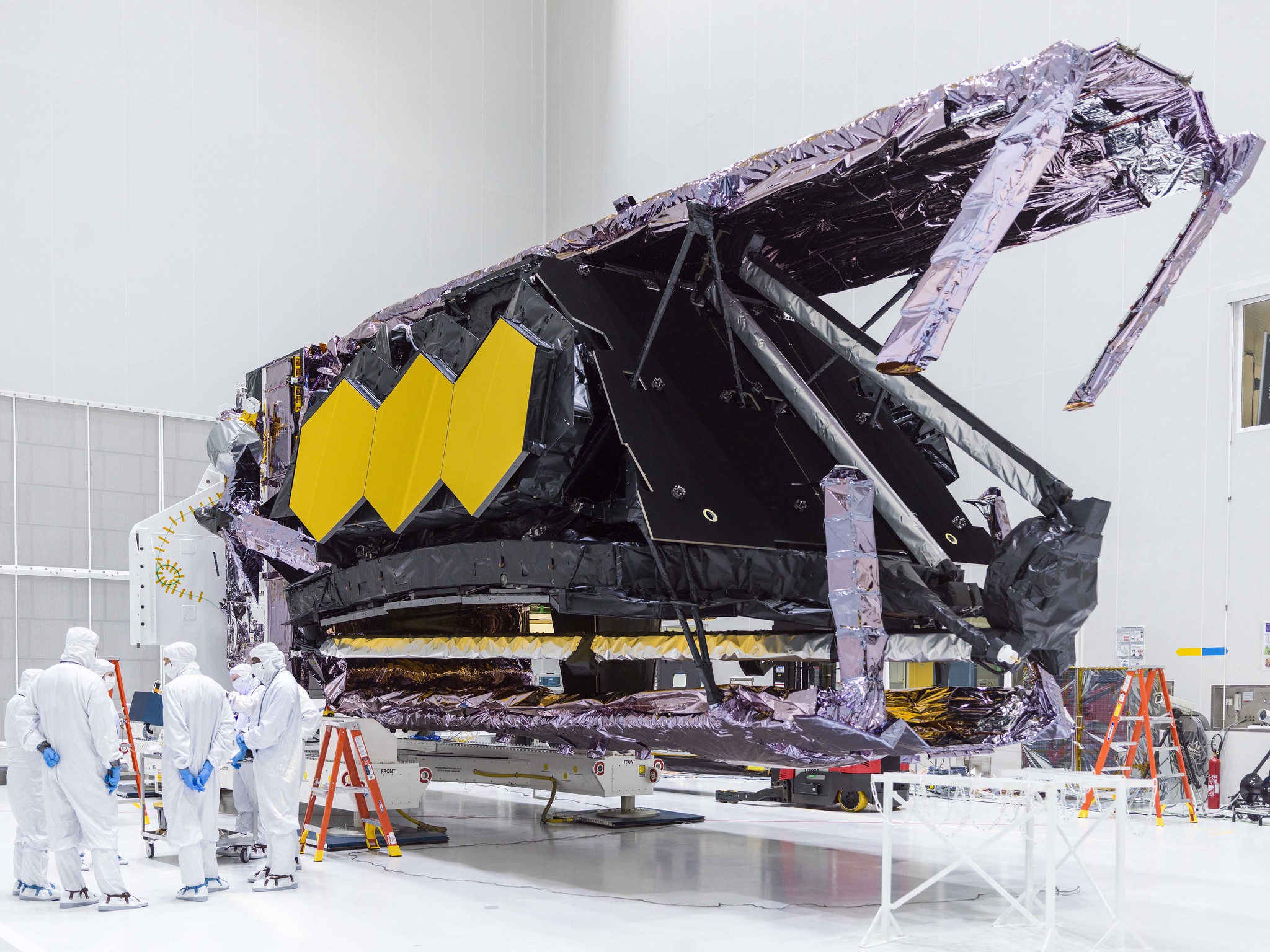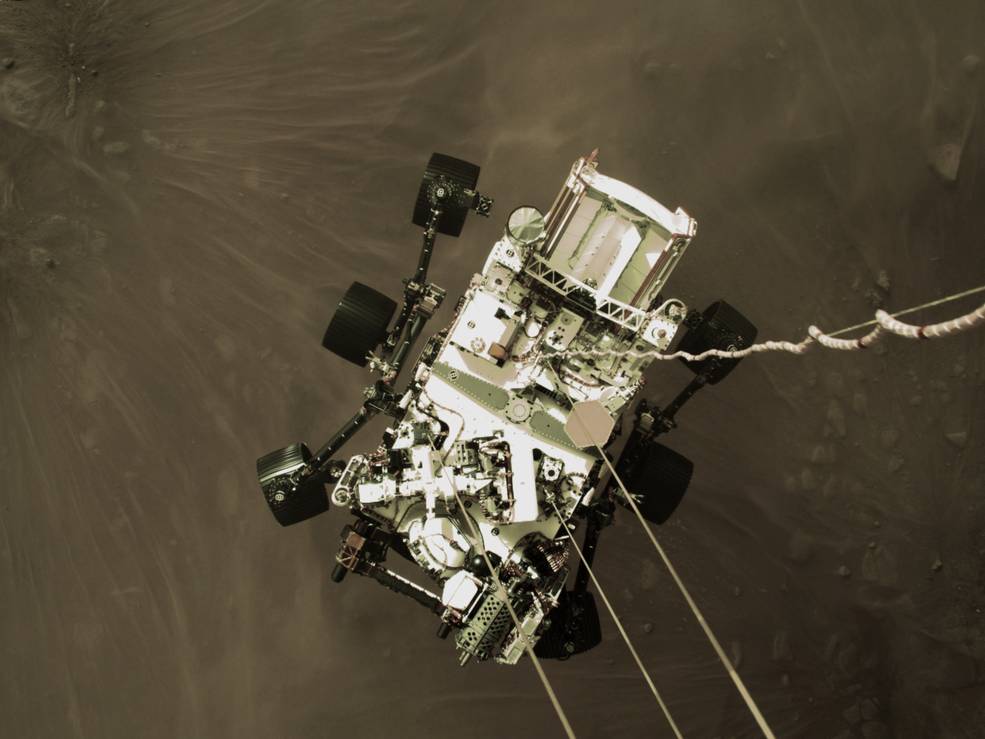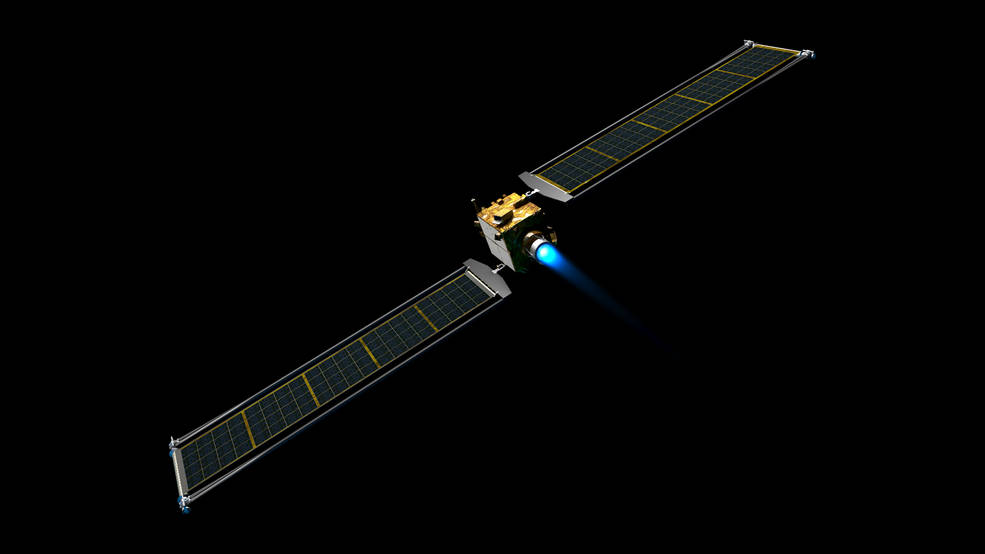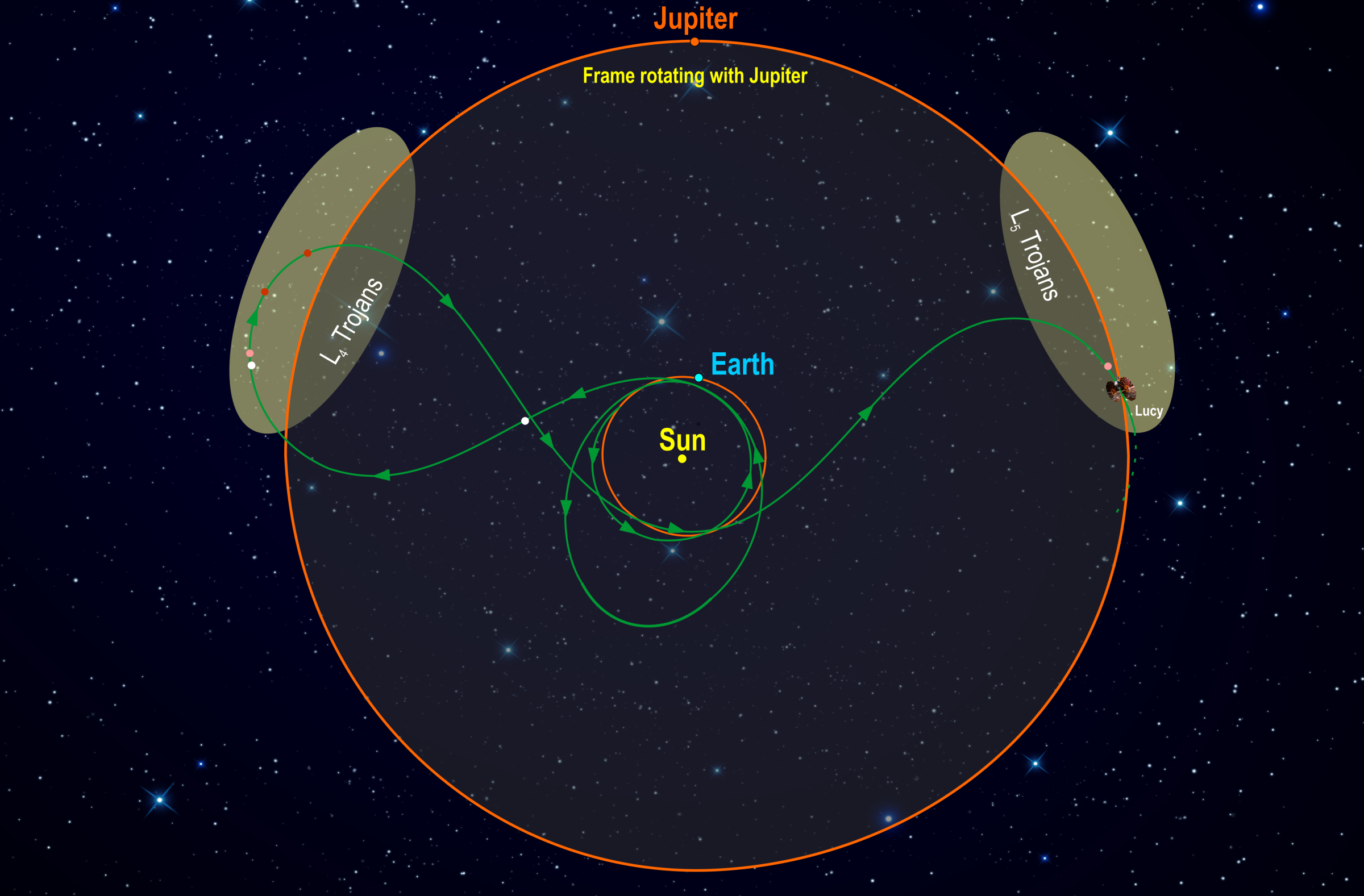Most people don’t notice when a branch of government has a very good year. What constitutes high times at the Department of Commerce? What makes them pop the Champagne corks over at the Office of Management and Budget? But NASA is different. When your job is to build rockets, light the fuse and send machines and humans into space, folks tend to notice if things go well—or don’t.
For that reason, as NASA closes out 2021, people both inside and outside the agency are celebrating what easily has been one of the most successful years for space since the golden era of the 1960s and 1970s, when it sometimes seemed NASA did almost nothing but succeed. The media haven’t always touted all of the most noteworthy accomplishments—due at least partly to the headline-grabbing 2021 that the billionaire boys’ club of Elon Musk, Jeff Bezos and Richard Branson have had getting their own space hardware off the ground. But NASA’s accomplishments have been there all the same.
Here are just some of the points NASA has put on the board this past year:
The James Webb Space Telescope

Never mind the familiar T-minus 10-second countdown. When the engines lit on the Ariane V rocket carrying the James Webb Space Telescope to space at 7:20 AM ET on the morning of Dec. 25, it was the culmination of 25 years of effort and no less than $9.5 billion in R&D and construction costs. But if the Webb works as advertised, the cosmic payoff will be orders of magnitude greater than the terrestrial expenditure.
The telescope’s main mirror is a complex, 18-segment assemblage of gold and beryllium hexagons, measuring 6.5 m (21.3 ft) across, compared to the Hubble Space telescope’s smaller—2.4 m (7.9 ft)—single-piece, circular design. The new approach was necessitated by the very different kind of work the Webb will do. Hubble sees in the ultraviolet and visible wavelengths, while Webb is designed to see in the infrared.
That is a very big deal, since infrared is the wavelength in which the oldest signals from the deepest regions of the universe stream to us. The farther away a signal source is, the longer the light has been traveling to reach us, so the image we see is not the star or other formation as it appears today, but as it appeared long ago. Hubble can see about 13.4 billion years into the past—just 400 million years after the Big Bang that began the universe. Webb will be able to see an additional 200 million years back—to the time when the first stars were flickering on and the first galaxies were forming. That is a door to cosmic history that has always been closed to us. On Christmas, NASA kicked it open.
The Perseverance Rover and the Ingenuity Helicopter

Landing metal on Mars has always been one of the most daunting challenges a space agency can face, with the long history of missions to the Red Planet littered with near misses, hard crashes and serial failures. But on Feb. 18, 2021, NASA hit it big, when the Perseverance rover landed in Jezero crater, carrying along the little drone-sized Ingenuity helicopter. Long ago, Jezero crater was Jezero lake, teeming with water and fed by an inflowing river. For that reason, it is seen as a prime site to look for signs of ancient—or even extant—life.
So far, Perseverance has driven 2.83 km (1.76 mi)—which counts as a lot, given the slow and painstaking way commands must be pre-written and loaded into the rover’s memory before it can move so much as an inch—drilling rocks, investigating geologic formations, and gathering samples of soil, which it is packing into titanium tubes that will be brought back to Earth by a future mission.
The Ingenuity helicopter, meantime, has just completed its 17th flight—far more than the original five it was scheduled to fly early in the mission as a mere proof of principle that an aircraft could operate on another planet. To date, the little chopper has spent a total of 30 minutes and 48 seconds airborne, covering a collective 3.5 km (2.2 mi), flown as high as 12 m (40 ft) and reached speeds as great as 16 km/h (10 mph).
There is no telling how long Ingenuity will last, and as for Perseverance? Well, think all the way back to 2012. That’s when Perseverance’s sister rover, Curiosity, landed in Mars’s Gale Crater. After more than 3,300 Martian sols, or days (which is about the same length as an Earth day), Curiosity is still chugging. Perseverance, if all goes to plan, can do the same.
The Double Asteroid Redirection Test (DART)

Hollywood is making much hay this season with Don’t Look Up, an improbably comic story about a comet on a planet-killing collision course with Earth. The movie plays for dark laughs—and earns them—but there is nothing remotely funny about the hard existential fact that we live in a shooting gallery of a solar system, and there is a lot of deadly ordnance out there that could spell the end of us as surely as a cosmic crack-up 65 million years ago wiped out the dinosaurs.
On Nov. 21, 2021, NASA began taking matters in hand, launching the Double Asteroid Redirection Test (DART) spacecraft to see if it might be possible to deflect an asteroid or comet that was taking a bead on our planet before it could actually reach us. The spacecraft’s target is the asteroid Didymos—which poses no threat to Earth—a 780 m (2,559 ft) rock that circles the sun from just outside our planet’s orbit to just outside of Mars’s. Didymos is itself circled by a 160 m (525 ft.) moonlet named Dimorphos. When DART reaches the Didymos system, it will deliberately crash into Dimorphos, and astronomers will then measure the degree to which the speed and direction of the moonlet’s orbit changes. Should the mission succeed in changing Dimorphos’s path significantly, it will represent a first, critical test of what could one day become a robust planetary defense system. And that day could come none too soon; just ask the dinosaurs.
The Journeys of Lucy

Not every asteroid wishes Earth ill. Indeed most are harmless and some are priceless—4 billion year old artifacts of the primordial material that created the solar system. Get up close to those rocks and you open a geological portal in time. Some of the most intriguing of these cosmic relics are Jupiter’s Trojan asteroids, two swarms of rocks—one of which precedes Jupiter in its orbit around the sun and one of which trails it—which are locked-in-time remains of the building blocks of the outer planets.
There are a total of about 4,800 Trojan asteroids, and on Oct. 16, 2021, NASA launched a spacecraft named Lucy (after the primordial Australopithecus fossil that represents one of humanity’s oldest ancestors) that will explore at least seven of them—plus one asteroid in the main belt between Mars and Jupiter—marking the greatest number of objects in independent orbits around the sun ever reconnoitered by a single spacecraft.
Lucy’s mission will be long and circuitous, taking 12 years to complete. As the spacecraft orbits the sun, it will make periodic flybys of Earth for gravity assists and trajectory corrections that will slingshot it first to the leading swarm of Trojans and then to the trailing one. The 821 kg (1,810 lb) spacecraft is equipped with a suite of instruments that will allow it to study multiple features of the asteroids, including their surface geology, their color and chemical composition, their densities and interiors, and any rings or moonlets that may circle the main masses. If there are secrets locked in the rocks, Lucy should reveal them.
Super Rocket Ready to Fly

When plans for NASA’s newest, biggest moon rocket were first released, Shrek 2 was topping the box office, Eminem was leading the charts and the first iPhone was still three years away. It was early 2004, and then-President George W. Bush announced plans to build a 21st century version of the Saturn V moon rocket—called the Ares V—that would return Americans to the moon by 2014. It was an exciting plan but, like so much else in NASA’s start-stop return to the lunar surface, a doomed one. The rocket was scrapped in 2010 by then-President Barack Obama, who cited cost overruns and missed deadlines. But under pressure from Congress, Ares V was revived with a new name—the Space Launch System (SLS)—which would have its first flight by 2016.
That year came and went, as did later promised targets. But now, at last, the SLS is set to fly. This year, the towering 98 m (322-ft.) tall rocket was finally stacked and assembled in the Vehicle Assembly Building at the Kennedy Space Center, in preparation for an initial, uncrewed test flight in March. The vehicle’s propulsion system uses proven legacy hardware—four space shuttle main engines, and two shuttle-era solid rocket boosters. When all six engines are lit, they will produce a staggering 4 million kg (8.8 million lbs) of thrust, easily exceeding the Saturn V’s 3.4 million kg (7.5 million lbs), making SLS the most powerful rocket ever launched. If all goes to plan, that first mission, dubbed Artemis 1, will make an uncrewed flight around the far side of the moon; Artemis 2, flying the same profile, but this time carrying astronauts, will follow in 2024. Artemis 3, which will land on the moon, could come as early as 2025. The SLS, 17 years in the making and the planning, is at last having its moment.
There were other triumphs in NASA’s big year as well—quieter ones perhaps, but triumphs all the same: In December, the space agency’s Parker Solar Probe became the first spacecraft to touch the corona of the sun; in May, the OSIRIS-REx spacecraft began its journey back to Earth, bringing home samples from the asteroid Bennu; throughout 2021, the Juno spacecraft continued its years-long study of Jupiter, which it began orbiting in 2016. As we head into 2022, the deep-pocketed likes of Musk and Branson and Bezos will continue to stake their claims in the increasingly competitive race to space, and grab media attention as they do. But NASA, a government agency that pays government wages, remains—as it has been for generations—the biggest, if not always the flashiest, player in the global space game. The year just past offered yet more proof.
More Must-Reads From TIME
- The 100 Most Influential People of 2024
- Coco Gauff Is Playing for Herself Now
- Scenes From Pro-Palestinian Encampments Across U.S. Universities
- 6 Compliments That Land Every Time
- If You're Dating Right Now , You're Brave: Column
- The AI That Could Heal a Divided Internet
- Fallout Is a Brilliant Model for the Future of Video Game Adaptations
- Want Weekly Recs on What to Watch, Read, and More? Sign Up for Worth Your Time
Write to Jeffrey Kluger at jeffrey.kluger@time.com